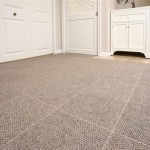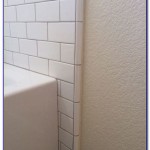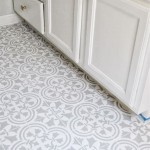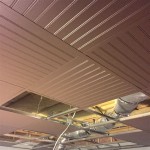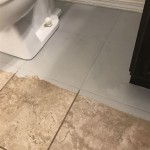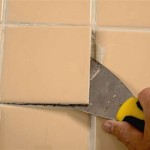Can You Tile Directly Onto Breeze Blocks?
Breeze blocks, also known as concrete masonry units (CMUs) or cinder blocks, are a common building material, particularly in warmer climates. Their open design allows for ventilation and airflow, making them ideal for exterior walls, fences, and decorative screens. However, their rough, porous surface raises the question of whether they can be tiled directly. The short answer is: it's complicated. While direct tiling is possible, it's rarely the recommended approach due to several factors.
Factors Affecting Direct Tiling on Breeze Blocks
Several key considerations determine the feasibility and longevity of tiling directly onto breeze blocks:
- Surface Porosity: Breeze blocks are highly porous, readily absorbing moisture. This can lead to issues with tile adhesion and grout drying.
- Surface Irregularity: The coarse texture of breeze blocks can make achieving a level surface for tiling challenging.
- Movement and Expansion: Like all building materials, breeze blocks are subject to expansion and contraction due to temperature fluctuations. This movement can cause tiles to crack or debond if not properly addressed.
- Moisture Exposure: Exterior breeze block walls are exposed to the elements, including rain, humidity, and potentially freeze-thaw cycles. These conditions demand specific tile and adhesive choices.
Preparing Breeze Blocks for Tiling: The Recommended Approach
Rather than tiling directly onto the breeze block surface, preparing the surface properly ensures a much more successful and durable tile installation. This typically involves the following steps:
- Cleaning: Thoroughly clean the breeze blocks to remove any dust, dirt, loose mortar, or efflorescence (salt deposits). A wire brush and a cleaning solution suitable for masonry can be used.
- Priming/Sealing: Applying a masonry primer or sealer is crucial. This step seals the porous surface of the breeze blocks, preventing excessive moisture absorption and improving adhesion for the next layer.
- Rendering/Applying a Leveling Coat: A render coat, often a cement-based mixture, creates a smooth, level surface ideal for tiling. This coat provides a stable base and ensures proper tile adhesion. A leveling compound can be used for minor irregularities.
- Waterproofing (for exterior applications): For exterior breeze block walls, apply a waterproofing membrane over the render coat. This crucial step protects the wall from water damage and prevents moisture from seeping behind the tiles.
Choosing the Right Materials
Selecting appropriate materials is critical for a successful tile installation on breeze blocks. Consider these factors:
- Tile Type: Porcelain tiles are generally preferred due to their durability and low water absorption. For exterior applications, choose frost-proof porcelain tiles.
- Adhesive: Use a high-quality, polymer-modified thin-set mortar specifically designed for exterior use or for tiling over concrete surfaces.
- Grout: Select a flexible, weather-resistant grout for exterior applications. Consider using a sanded grout for wider grout joints.
Direct Tiling: When Is It Possible?
While surface preparation is generally recommended, direct tiling might be considered under specific limited circumstances:
- Interior Applications: For interior breeze block walls that are not subject to moisture exposure, direct tiling might be feasible. However, proper cleaning and priming are still essential.
- Smooth-Faced Blocks: Some breeze blocks have a smoother face than traditional ones. While still porous, these blocks might offer a better surface for direct tiling, though priming and appropriate adhesive selection remain crucial.
- Small-Scale Projects & Decorative Features: For small decorative projects or non-structural applications with minimal exposure to moisture and temperature fluctuations, direct tiling might be a viable option with careful surface preparation.
Long-Term Considerations
Regardless of the chosen method, several long-term considerations apply to tiling on breeze blocks:
- Maintenance: Regularly inspect the tiled surface for any signs of cracking, loose tiles, or grout deterioration. Promptly address any issues to prevent further damage.
- Climate: In regions with freeze-thaw cycles, proper preparation and material selection are paramount to prevent damage caused by expanding ice.
- Sealant: Periodically sealing the grout can help protect it from staining and moisture penetration, prolonging the life of the tile installation.
Seeking Professional Advice
Consulting with a qualified tiler or masonry professional is highly recommended, especially for large-scale projects or exterior applications. They can assess the specific conditions, recommend appropriate materials and methods, and ensure a successful and long-lasting tile installation.

Tile Over Blockwork Mike Haduck

Painting Breeze Blocks What Next Page 1 Homes Gardens And Diy Pistonheads

Everything You Need To Know About Breeze Blocks Clay Imports

Everything You Need To Know About Breeze Blocks Clay Imports

Dreamin Breeze Block House Architectureau

Breeze Block 75 Designs From 30 Companies Jan 2024 Update

How To Prepare Uneven Walls And Floors Tile

Breeze Block 75 Designs From 30 Companies Jan 2024 Update

North Yorks Open Studios Lizzie Shepherd On Landscape

External Brick Slip Cladding Slips
Related Posts

